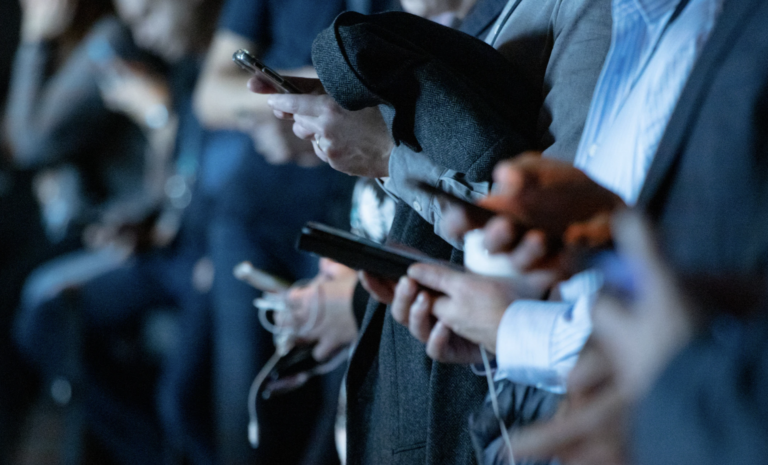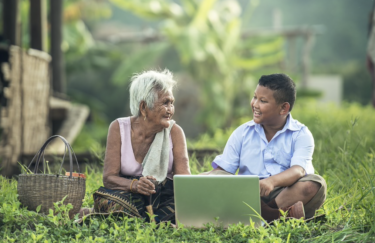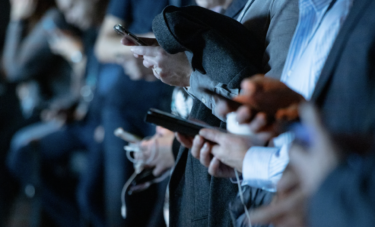はじめに
2015年から3年間ほど全国の小中高校を訪問して、生徒さんを中心に保護者や教師や教育関係者を含めていろいろな方がたにケータイの便利さと同時に潜む怖さについて講演をしてきた。今回は、そんなスマホが心身に与える影響について考えさせる動画があったので、視聴してみた。興味のある方はトライしてほしい。
(出典:YouTube)
スマホ・ケータイ安全教室
下の写真は、埼玉県立幸手桜高校を訪問したときに学校側が撮影して、学校のホームページに掲載いただいていたものだ。ありがたい。この頃には平均では1学年100数十人程度の規模が多かったけど、自治会主催では参加者一人というのもあったり、高校の全校生徒だと1000人を超えるケースもあった。最初にアイスブレイクで当時流行っていた三太郎の動画をかけたり、ケータイのふりかえりのような話をすると、子供たちがどんどん真剣に聞いてくれるようになり、舞台を右に左に移動すると、生徒たちの視線も右に左に移動することを感じることがあった。そんな風に手応えを十分に感じられる時は最高に嬉しい。でも、本当に最高に嬉しかったのは、この高校ではないけど、定時制高校の夜の講演会で、最前列で最初から寝たふりをしている生徒がいて、でも講演中も気になるのか、薄目を開けながらチラチラ見ていて、講演終了後にその生徒にどうだった?と聞くと「(面白くて)寝れなかった。」という言葉を引き出した。思わずガッツポーズを心の中でしたのをよく覚えている。
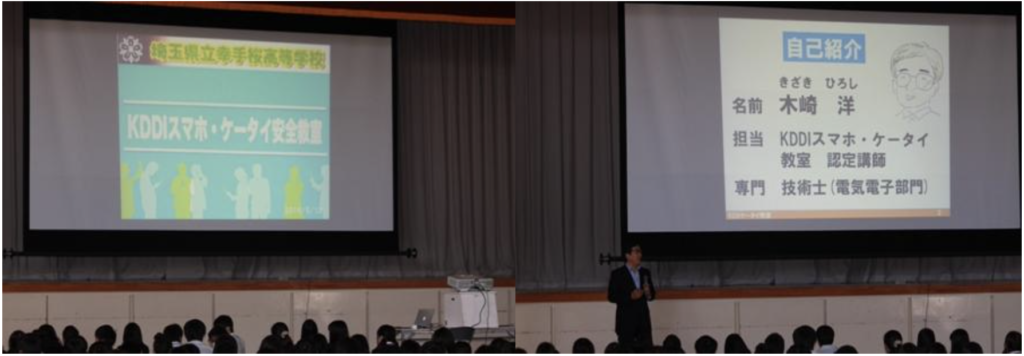
(出典:幸手桜高等学校)
ノモフォビア(nomophobia)
スマホやケータイの使い過ぎはなぜ危険かといえば、以前「Googleはあなたの記憶力を低下させるのか?」で投稿したように、人間の頭脳はできるだけ効率的に省力化して作業をしようとするので、外部装置に任せられる部分があれば、そのやり方だけをインプットして、それ以外は脳に保管しない。このため、漢字を書けなくなったり、電話番号を覚えられなくなるのも、脳が断捨離したためだ。しかし、そんな風にケータイやスマホに依存した状態でスマホを取り上げるとパニックに陥るケースがある。特に幼少時から自然にスマホを操作しているようなスマホネイティブな子供たちは要注意だ。スマホ依存症を英語でなんと言うのかと思ったら、ノモフォビアと言う言葉あることを知った。これは、英語では、 ”Nomofobia” と書く。Nomofobiaは、”no-mobile-phone phobia” の略だ。phobiaは恐怖症の意味なので、スマホ依存症となる。精神的な部分の影響に加えて、スマホを長時間使い続けると首の形にも影響を与える。本来なら下の図(左)のように正常なカーブがつくべきなのに、スマホの画面を見るためにずっと下を見ているとストレートネックとなり、首や肩がこったり痛みといった症状に加えて、頭につながる首・肩の血流が悪くなると頭痛や眼精疲労につながるので、危険だ。ノモフォビアは世界中で深刻な社会問題となっているので、節度ある使い方が求められる。

(出典:imasuguニュース)
5つの質問
動画を見終わると5つの質問があった。
Q1) What is the average amount of time per day that people spend looking at their phones?
動画の中では、人々のスマホの平均利用時間は1日4.7時間とあった。これは国や年代や調査時期によっても異なる。例えば、下の図は、2018年11月に男女686人にアンケートした結果で、10代では4時間58分、20代では5時間25分、30代以上では5時間22分と20代が最も長く使っているという結果だった。バルト三国を旅行した時もエストニアではそれほどスマホべったりの印象はなかったけどリトアニアでは多くの人がスマホに夢中だった。飲食店の店員も暇があれば(というか作業している時間以外は)ほぼスマホを見ていた。

(出典:ECのミカタ)
Q2) Time spent in front of screens had led to an increase in cases of:
スマホを長く見続けた時の影響を問いている。これはゲームの見過ぎや、テレビの見過ぎなどでも同じだけど、近視(Myopia)となる。自分の場合は、暗いところで本を読み、漫画を読み、テレビを見ていたら、ある日突然眼球が縮むような感覚を感じることがあり、その日依頼近視になった。最近は近いところも見にくい老眼だけど、近視と相殺されることはなく、老眼&近視だ(涙)。
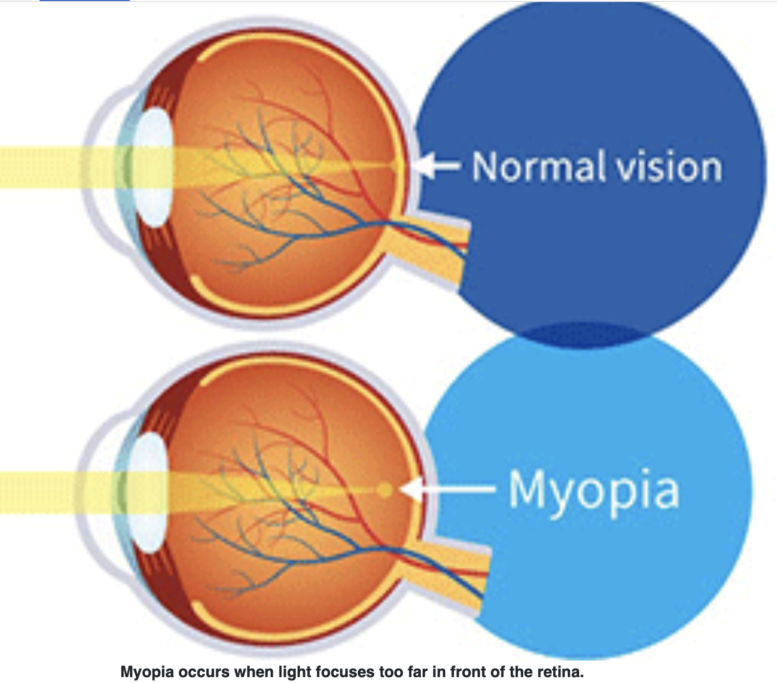
(出典:myopia)
Q3) What is a compulsion loop?
強制ループとは何かという設問だ。ある刺激を受けるとドーパミンが発生し、脳はそれを快感と感じるので、もっとドーパミンを求めるという悪循環だ。英語で説明するなら次のような感じだろうか。
Q4) What is nomophobia?
ノモフォビアとは何かという設問だ。いわゆるスマホ依存症のことだ。
Q5) How do phones interfere with sleep?
寝る前についスマホをチェックして、YouTubeやTickTokを長時間見てしまって、結果的に睡眠不足になることがある。そんな行動をしていると、単に睡眠不足になったり、近視になったりするだけではなく、脳波が活性化して、睡眠障害になったり、生活リズムが不規則になると、肥満や癌の原因となったりすることさえあり得るという。英語で言えば、こんな感じだろうか。
まとめ
自分と同時期にスマホ・ケータイ教室の講師になった人も半分程度は定年(再雇用)で卒業した。この3月にも卒業する人がいるのでZOOMで壮行会をする予定だ。スマホネイティブの子供たちは、スマホやタブレットやPCなどをうまく使いこなすと共に、それらに依存しない自制心が求められる。しかし、自制心を持つことを求められるのは子供だけではなく、大人も同じだ。特に、若い母親がスマホ中毒だとその子供たちもスマホ依存になりやすいだろう(仮説)。一方で、デジタルに疎い中高年代はデジタルデバイスをもっと使いこなす必要がある。要はメリットとデメリットを理解して、適切に自律的に使いこなすことが求めれるということだろう。
以上
最後まで読んで頂きありがとうございました。
拝
参考:英文スクリプト(ディクテーション版)
Of the 7 billion people on Earth, roughly 6 billion own a cellphone, which is pretty shocking, given that only 4.5 billion have access to a working toilet. ßo how are these popular gadgets changing your body and brain?
If you are looking down at your phone right now, your spine angle is equivalent to that of an 8-year-old child sitting on your neck – which is fairly significant considering people spend an average of 4.7 hours a day looking at their phone. This, combined with the length of time spent in front of computers has led to an increase in the prevalence of myopia or nearsightedness in North America. In the 1970s about 1/4 of the population had myopia, where today nearly half do; and in some parts of Asia, 80-90% of the population is now nearsighted.
And it can be hard to put your phone down – take for example the game Candy Crush. As you play the game, you achieve small goals causing your brain to be rewarded with little bursts of dopamine – and eventually, you are rewarded with new content. This novelty also gives little bursts of dopamine and together create what is known as a ‘Compulsion loop’ – which just happens to be the same loop responsible for the behaviors associated with nicotine or cocaine. Our brains are hard-wired to make us novelty-seeking, and this is why apps on our phones are designed to constantly provide us with new content, making them hard to put down. As a result, 93% of young people aged 18-29 report using their smartphones as a tool to avoid boredom, as opposed to other activities such as reading books or engaging with people around them. This has created the new term ‘nomophobia’ – the fear or anxiety of being without your phone.
We also see a change in brain patterns: alpha rhythms are commonly associated with ¶wakeful relaxation like when your mind wanders off, whereas gamma waves are associated with conscious attentiveness. And experiments have shown that when a cell phone is transmitting – say during a phone call – the power of these alpha waves is significantly boosted, meaning phone transmissions can literally change the way your brain functions. Your smartphone can also disrupt your sleep! The screen emits a blue light which has been shown to alter our circadian rhythms, diminishing the time spent in deep sleep, which is liked to the development of diabetes, cancer, and obesity. Studies have shown that people who read on their smartphones at night have a harder time falling asleep and produce less melatonin – a hormone responsible for the regulation of sleep-wake cycles. Harvard medical school advises the last 2-3 hours before bed to be ‘technology’ free, so pick up a book before bed instead.
Of course, smartphones also completely change our ability to access information – most notably in poor and minority populations. 7% of Americans are entirely dependent on smartphones for their access to the internet. A 2014 study found that the majority of smartphone owners use their phones for online banking, to look up medical information, and searching for jobs. So while phones are in no way exclusively bad, and have been a part of positive change in the world, there is no denying that they are changing us. But, many successful people have now decided to take ‘smartphone vacations’ in order to increase productivity. In our new Asap THOUGHT video we break down the top 6 reasons you should take a smartphone vacation, and how it could benefit your life right now.
And subscribe for more weekly science videos

